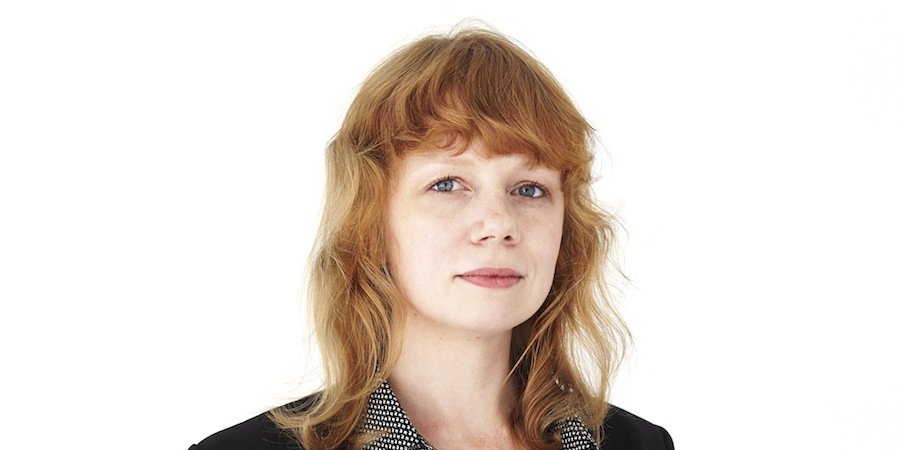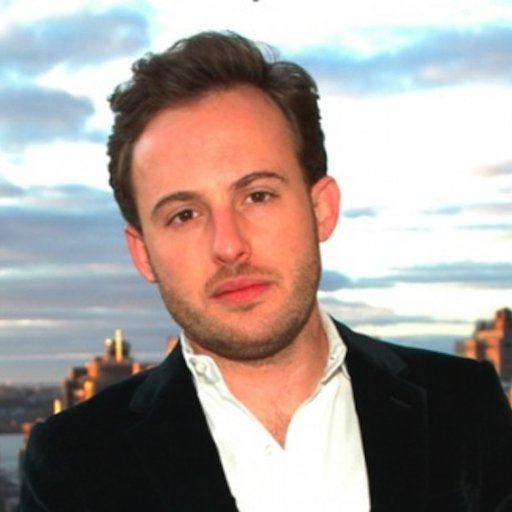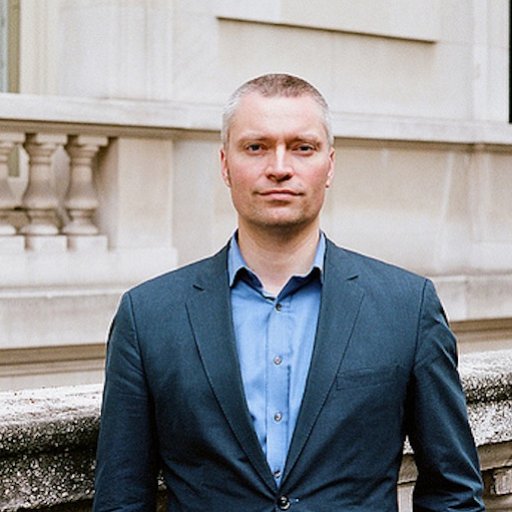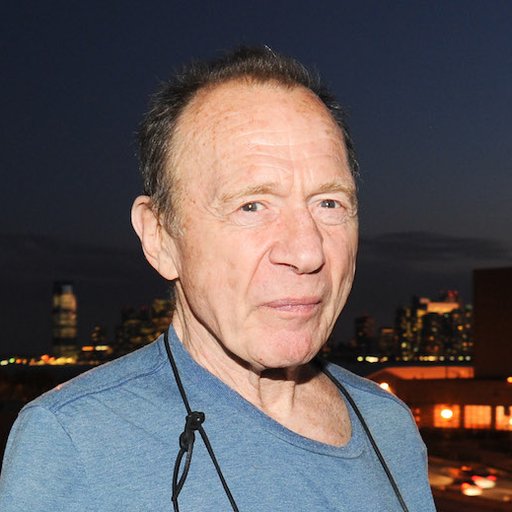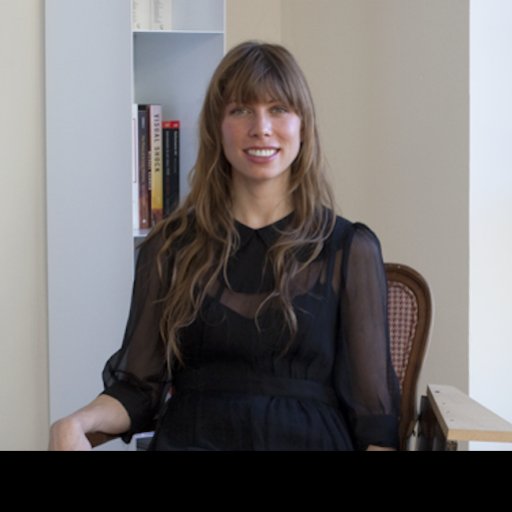Over the past decade, the Middle East's participation in the international art world has increased dramatically. Across the Gulf states, world-class museums have been built at a galloping clip, art fairs have blossomed, and Qatar has emerged as quite possibly the largest buyer of contemporary art on the planet. Middle Eastern artists have become stars on the biennial circuit, won major awards (e.g. Emily Jacir's 2008 Hugo Boss Prize), received solo shows at eminent museums, and landed blue-chip gallery representation. However, there's no escaping the fact that art from the region—particularly outside of Israel—has never received the same degree of curatorial or market attention in America as other emergent global powers. No New York museum, for instance, has staged a significant survey of Arab contemporary art. Until now.
Put together by a team of New Museum curators led by Massimiliano Gioni, "Here and Elsewhere" is the sprawling product of extensive research throughout the Arab world, with organizers logging generous travel time to conduct on-site studio and collection visits. The result is a historic survey filling all four floors of the institution. To find out the thinking behind the show, and to learn how the curators negotiated the region's blistering political dimensions, Artspace editor-in-chief Andrew M. Goldstein spoke to New Museum associate curator Natalie Bell.
Is it true that "Here and Elsewhere" is the first exhibition in New York to be devoted to new art being made in the Arab world?
Well, there have been a number of previous efforts that I think are worth keeping in mind, because they very modestly paved the way for something on a larger scale. There was a show called "Tarjama/Translation" at the Queens Museum in 2009, and MoMA had a show called “Without Boundary” in 2006 that brought together artists from different parts of the Middle East. But ours is really the first museum-wide exhibition, and at the New Museum we have the ability to really fill the entire space of the museum to make something cohesive and of maybe more thematic depth. Our focus with "Here and Elsewhere" is very specific in this sense. It’s not only about new art, but about how artists are revising the conventions of image-making and using documentary and archival practices to narrate history—and, in some cases, current events as they witness them.
Where did the idea for the show originate?
We have a history at the museum of doing group exhibitions that feature an aspect of international art that we don't think has been exhibited much in New York. You might remember "Ostalgia," which was a large group show a few summers ago that took as its focus artists from the former Soviet Union and its related states, looking at how artists were responding in various capacities to the Soviet Union and historical events from that time. Then, of course, there was the "1993" show, which had more of a temporal than geographic focus, examining art made in New York during that year. We also see “Here and Elsewhere” in that lineage—as part of the New Museum’s effort to look at what we feel other New York institutions have overlooked, or to simply show important work that is not being shown elsewhere in the city.
In its very opening statement, the show's catalogue describes Arab contemporary art as a "contentious concept." Can you talk about this a little?
I think that while curators have aimed in recent years to stretch people’s attention to different parts of the world, a lot of the more critical discussions in contemporary art have been aimed at resisting the temptation to reduce artists to their origins. So what we had in mind for this exhibition was to create a show that wasn't essentializing or reductive in that way, but that allowed for an appreciation of works that draw on individual experiences of a diverse cultural landscape that in some ways is still bound by historical connections.
What criteria did you use for identifying artists for the show? Did they all have to be based in the Middle East or have deep roots there, or is it more of a diasporic group of artists living all over the world?
It varied. We didn't have any strict criteria in that sense—it’s more about the individual works. I think it's important to remember that artists are living all over the world and traveling all over the world, so however much their current place of residence or where they were born influences the kind of work that they make, there still is a much more international influence on many artists’ work.
This is a sizable show that features over 45 artists from 12 countries, and you personally conducted a large part of the research for the show. How much time did you actually spend in the region, and what was your process for putting together the exhibition?
I made three 10-day trips to the region visiting with artists and seeing different art spaces, and of course the museum’s associate director Massimiliano Gioni made several trips of his own. In addition, we conducted a significant amount of research through outreach, writing to over 800 artists and asking if they would show their work with us, and dozens of studio visits were conducted by Skype as well.
Where did you visit yourself?
I traveled to Amman, Jerusalem, Ramallah, and in Morocco to Tetouan, Tangier, Rabat, Casablanca, Marrakech, and to Algiers, Sharjah, and Dubai.
Did you find any major differences between the art scenes there and here in America, perhaps in the ways that artists are incorporated into society, or the way their studios function?
With studios, it’s actually not so different, logistically speaking. In the West Bank and in Morocco, I visited artists' studios that were in the more industrial parts of the city, same as in New York, and just as here, if artists don’t have or need a studio proper they will work from a home studio. But the art scenes are of course very different. In a city like Amman, for instance, there are relatively few commercial art galleries that are showing work outside of more traditional, maybe academic styles, but then there’s also Darat al Funun, an experimental space that holds an important collection in the region, hosts residencies and workshops, and commissions works by young artists. In Ramallah, the first contemporary commercial art gallery was opening when I was there in December of last year, but there are many artists exhibiting with nonprofit galleries like the Khalil Sakakini Center or university galleries like Birzeit.
An art scene in general is hard to define—and maybe it’s better that way—but I did notice a rift between artists who were making work that was likely to sell in commercial galleries and artists who were making work that maybe was not so readily marketable. Also, I noticed that it seemed like a majority of artists were really concerned with the idea of public space and were committed to making work for a much more general and non-specialized audience, to a degree we don't see in New York. In Sharjah too—particularly through the Sharjah Art Foundation’s commitment to their community—you see artists working in a local context, and firstly for a local audience. In some cases they're even quite idealistic about art’s potential for social change, which is an attitude that of course still exists within New York’s art scene, but feels a bit diminished or marginalized in relation to everything else.
How did the artists react to the show's concept when you explained it to them?
Artists were generally interested to know what sort of focus the exhibition was taking. Placing the show’s emphasis on how artists are critically investigating the role of images helped clarify what the exhibition was about, and also I think linked it to the challenge of representation understood more broadly—and demonstrating our awareness of this issue seemed to resonate with a lot of the artists in the show.
Can you talk a little bit more about that, about how these artists are critically investigating the role of images?
There is a lot of work that involves video and photography, and those mediums are very essential to many artists’ practices in the exhibition. Many have used photography to question what a photograph is—how we consider it to have a truth value and whether that can be doubted—and so it has a central role in thinking critically about the function of images, with video sometimes being an extension of that. In that regard, documentary and its different modes is another of the show's main themes, and you see a range of practices and attitudes with regard to documentary conventions.
For instance, Bouchra Khalili’s video portraits of migrants narrating their precarious journeys to Europe are in many ways very direct accounts, but you never see the faces of the migrants—instead the focus is on their voices and language and the lines that trace their travels. Many of the artists are also considering how images and objects are used to narrate different histories, like Lamia Joreige, whose work is emblematic of a generation of artists in Lebanon who in the 1990s began to examine how the Lebanese Civil War could be documented or recounted to future generations. And what’s especially interesting and significant in this case is that the conflict itself was so sectarian that Lebanon as a country has not yet been able to agree upon a common narrative of that relatively recent period.
Did you find any particular overarching commonalities in the way that artists have been approaching this question, either in political valences or stemming from the long image culture of the region? For instance, Islam has a fairly complex position on the role of images, historically.
Well, I should perhaps note first that the show is looking at art practices in relation to the Arab world and not Islamic art practices, so for the most part any conservative Islamic position on images—which is strict or prohibitive really only among the most orthodox sects—really doesn’t play a role in how artists make or regard images. Historically and politically, I think one commonality is that a lot of artists are critically aware of how colonial histories determined the sorts of images that were being made throughout the early part of the 20th century. These power structures and their influence on cultural understanding or prejudices are something that a lot of artists are critically aware of, and in the research of Akram Zaatari or Ala Younis you see a preoccupation with this postcolonial moment when, through photography and filmmaking, suddenly it was possible for people to create their own images and in doing so define their own identity and tell their own histories.
We noticed, too, how artists were responding to archival images and images within the present day, looking at historical photographs that have been archived and then looking at how photographs function in the media presently, or how they function personally in people's lives now that photography is available at a much wider scale than it was even 20 years ago.
It's interesting to think that, when it comes to the New York audiences who will be seeing the show, by far the most exposure they've had to imagery from the Middle East has been in the context of war or conflict within the region. How does the show position itself against this political and historical context?
I think that war and conflict is something that artists are sometimes responding to and sometimes not, but when they are responding to it, it's often in the form of a kind of first-person narration that is automatically different from a lot of media-driven representations of conflict that focus just on spectacle. One of the most poignant examples of this in the show is the work of a Syrian filmmaking collective called Abounaddara, which has posted one short video each week since 2011. In a majority of their videos a single persons sits and tells a story directly into the camera—a very direct form of testimony, or witnessing—and what’s striking is that these are everyday Syrians: women and men alike, children, students, militia fighters who used to be schoolteachers or electricians. Their stories are often not at all what we might expect, very personal aspects of the conflict that we simply don’t see in the news or online, even in the cell-phone videos being made to document different aspects of that conflict.
But not all artists are explicitly pushing back against media representation—it's sometimes a subtler image-making process. In relation to current events and politics, Mounira Al Solh has a very beautiful video in the show from 2014 that connects the current surge of Syrian refugees in Beirut with the childhood memory of fleeing Beirut for Damascus during Lebanon’s civil war. At the same time, though, she plays on the idea of being distanced from both the past and present by narrating the film in such a way that it slips between first- and third-person as the camera pans very slowly over a perfectly slaughtered lamb. It’s a more oblique and abstracted manner of standing witness to current conflicts, but it does so just as powerfully.
Certain artists in the show, like Kader Attia and Wael Shawky, are famous figures who have exhibited internationally for years in museum, biennial, and art fair contexts, and whose work translates easily to international audiences. Is that kind of broad communicativeness consistent across the artists selected for the show, or are there some artists who are speaking to a more specific or local audience, like the ones you mentioned you saw in Sharjah?
I think the artists are making work for all audiences for the most part. You mention biennials, and actually I think that one of the strengths of biennials is that they are both for a local and international audience, so in the same sense that artists participating in any biennial are thinking about both, I think many of these artists are as well. With someone like Mazen Kerbaj, who is showing a series of journal entries or drawings that illustrate his experience in Beirut in 2006, when it was under Israeli airstrikes, he in fact was making these and posting them to his blog at the time, and writing in French, English, and Arabic, so really aiming to reach as large and international an audience as possible. Other artist have made work really for themselves. Van Leo’s self-portraits, some of which show him dressed in costume or looking provocative, remained private until after his death. But he was actually a celebrated studio photographer in Cairo, and many of his other works were portraits made for people in Cairo who commissioned them.
The show's title comes from a 1976 film Jean-Luc Godard made with Jean-Pierre Gorin and Anne-Marie Miéville, Ici et Ailleurs. How did you first come across that film, and why did you adopt it as the show's namesake?
As a film, it's a fascinating case study in the power and dangers of image-making. The film itself—and its own process of coming into being—is an example of the phenomenon it ends up looking at. The starting point of the film was that Godard was commissioned by Fatah and the PLO to make a film about the Palestinian Revolution, which was tentatively titled Until Victory. After shooting the footage, Godard found that he couldn't bring himself to make a film that was bound to come across as a piece of propaganda. So he scrapped the project until 1976 when he decided to create a different film reflecting on how images—in this case, propagandistic images—are produced and distributed and consumed.
So what intrigued us was that Godard ended up making a completely different film that explicitly stepped away from propaganda, and, in that sense, we were attracted to the title because of this pivot that inaugurated his reflection on the function of images and representation. But we weren’t the first ones to be attracted to it. We first came across the film because a number of artists had made reference to it either in their works or in their writings and interviews. Lamia Joreige is one, and she actually made a really interesting 2003 film called Here and Perhaps Elsewhere, in which she interviewed people along Beirut’s Green Line, which divided East and West Beirut throughout the Lebanese Civil War.
There are clearly very specific political contexts and current events that surround many of these works, and the catastrophic new developments in the Israeli-Palestinian conflict are now at the center of the world's attention. Considering that the show's very title pays homage to Godard's cinematic interactions with the birth of the Palestinian cause, how does the exhibition engage with this kind of urgent political reality in the region that is the focus of the show?
There certainly are works that make direct reference to highly charged political contexts—and the Israeli-Palestinian conflict is, of course, among the most charged, even apart from what’s going on right now. But the focus of the exhibition is not really reducible to artists engaging with politics or current events. In fact we made an effort to avoid simplifying in this way—we didn’t want this to be a show about the Arab Spring, or one in which artists are characterized as spokespersons from a foreign battlefield.
Certainly a lot of the artists are concerned with history and the history of their families or communities, but what’s interesting about the different works in the show is that they engage on a conceptual or personal level that sometimes overrides any particular social or political context. I’m thinking about the painter Marwan, for example, whose figurative self-portraits are really wonderful and expressive and yet playfully odd, or the attention to color in the landscapes paintings of Etel Adnan, or the sculptures of Hassan Sharif that are these dense and obsessive accumulations of surplus manufactured materials that refer to economics and social changes in a perhaps more indirect way.
I think there are ways in which other works do speak to current events, though perhaps more inadvertently through making reference to past events. Basma Alsharif’s 2009 video We Began by Measuring Distance, for instance, opens with a scene of the aftermath of an airstrike on a Gaza beach during the 2006 conflict but shifts into a contemplative film essay using found footage and sound. And Hrair Sarkissian’s 2008 photos of public execution sites in Syrian cities reveal nothing of the current conflict in Syria, but hint toward a government that survived by maximizing fear. So, in some cases artists who look into the past or into the future with their works can furnish us with new ways of interpreting the present.











